5 Tips For Riding Two-Wheelers In The Monsoon

- Wear high visibility gear to be seen on the road and in dull conditions
- Be gentle on the throttle and the brakes to avoid losing control
- Mind your surroundings at all times during the monsoon
Riding your two-wheeler in the monsoon can be tricky. It reduces your efficiency on the road drastically, and you need to be extremely cautious about how you tread on slippery surfaces. But that shouldn't stop you from riding in the rain. While you may not be as fast as you are on a dry surface, a little precaution and lots of practice can make you prepared to handle the showers with ease. The key thing to note here is that all you need to follow are some fundamental rules that will keep you and your two-wheeler safe. So, make sure to follow these five riding tips for the monsoon this season.
Also Read: Top 5 Important Car Care Tips For The Monsoon

Riding jackets with colours like orange, fluorescent yellow, white or silver make you more visible on the road
1. Be Seen
While the introvert in you may not want to be the loudest in the room, it certainly helps to be the most visible person on the road. Visibility goes down dramatically during the rains, and the more easily you can be spotted, the better are your chances of avoiding a mishap. Wear a high visibility jacket in orange, fluorescent yellow or metallic silver. You should have reflective stickers on your jacket and the two-wheeler too. It would also be wise to invest in a helmet that gets the aforementioned colours to add to the visibility. At the same time, remember to check your helmet visor for any scratches and replace it if necessary. You can also apply some car wax on the helmet visor to avoid water buildup that obstructs your vision.
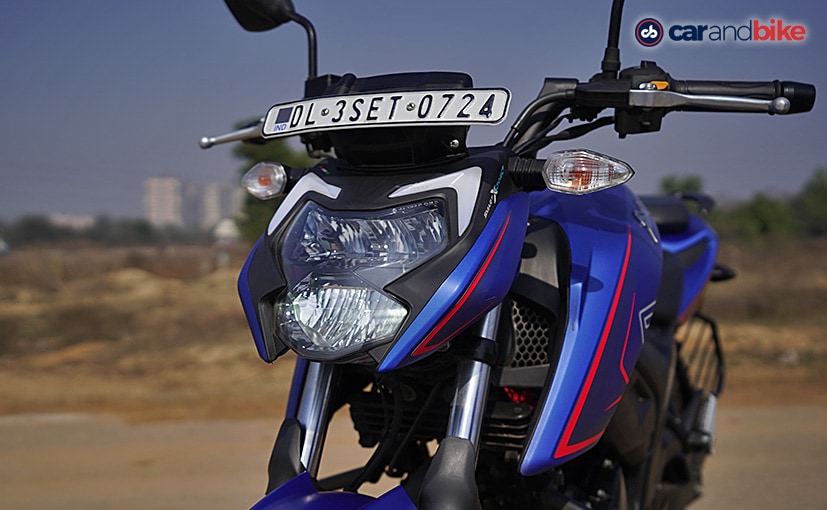
It's wise to get all the lighting, switches and indicators checked on the two-wheeler
2. Inspect The Tyres And Electricals
A good pair of tyres make all the difference between riding and falling on a two-wheeler during the monsoon. A worn-out tyre substantially increases your chances of skidding and is a safety hazard in every sense. That's why make sure to replace old tyres in time for the rains. Do not wait for the tyres to reach the end of their shelf life. If the tyre shows signs of extensive wear and tear, make sure to get them replaced. Tyre treads should have at least half their shelf life left to provide adequate traction. Similarly, inspect your wiring and electricals. Make sure all lights, switches, bulbs and indicators are in working order. Replace and repair any parts that aren't working. It's also advisable to wash your two-wheeler regularly to remove the build-up of dirt from several areas.

Be gentle with power and the brakes during monsoons to avoid losing traction on the road
3. Gentle With The Throttle
Monsoons aren't the time to test your limits on the road. In fact, don't do it even on a sunny day. But you need to be extra cautious during the rains. Roads are wet and slippery, and there's less grip for your two-wheeler to hold on to. That's why it's safer to go gentle on the throttle. Twist it too hard and you are likely to spin the wheel, lose traction, and slip. Instead, try and build speed in a linear manner, so you are in more control of the situation. This also helps if other road users lose control. It gives you a fighting chance to safeguard yourself. At the same time, do go easy on the brakes as well. Do not get enthusiastic about braking hard, and instead gently tap the brake lever to come to a halt. Make sure to use the front and rear brakes together to stop safely.
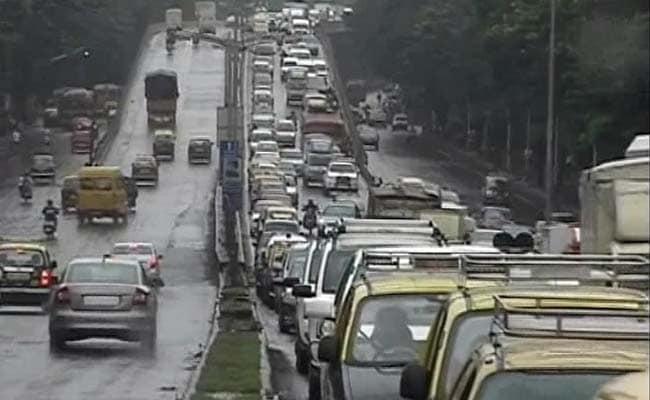
Reducing the gap between vehicles also reduces the chances of any corrections in case of a mishap during the monsoon
4. Keep Distance
There's a reason trucks have this written at the back. If they brake hard and someone is running too close, they would crash into the truck like a bug on the wall. During monsoons, you have less traction and that increases your braking distance. Moreover, your vision is obstructed by rains that will further hinder your judgement. So, be safe and keep a distance from the vehicle in front of you. You will also be seen easily by the driver in front as the distance helps make you a part of their peripheral view.
Also Read: Top Five Tips To Keep Your Car's Windscreen Clean And Defogged In Monsoon

Waterlogged roads are best avoided during monsoon, even if you have to travel across, make sure to keep the throttle open to avoid water entering the engine
5. Be Aware Of Your Surroundings
Rains can be a chaotic time and sometimes things are just two steps away from total meltdown. A falling branch, people crossing the road, street animals are all potential hazards to you on the road. They can crop up from anywhere at any time. You also need to be mindful of waterlogged roads and the possibility of open drains. Avoid puddles altogether, especially if you do not know how deep it really is. At the same time, crossing a waterlogged road is not recommended at all.
Riding in heavy rains should be strictly avoided. You also need to be careful of low lying areas that have a higher risk of flooding. Do remember, when in doubt, wait it out.
Trending News
 1 min readTriumph Tracker 400: In Pictures
1 min readTriumph Tracker 400: In Pictures
Latest News
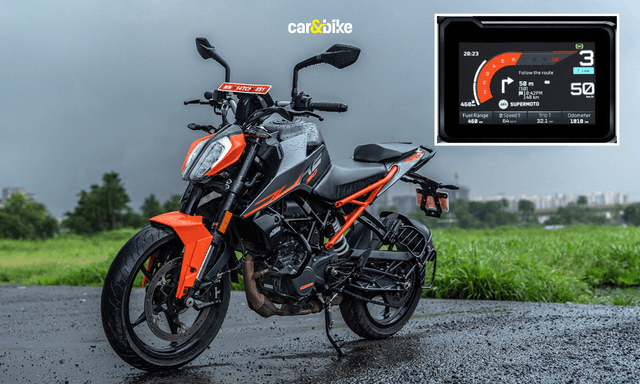 car&bike Team | Dec 18, 2025KTM 160 Duke With TFT Dash launched At Rs 1.79 LakhThe 5-inch colour TFT dash is borrowed from the 390 Duke and is shared across the brand’s sub-400cc lineup.2 mins read
car&bike Team | Dec 18, 2025KTM 160 Duke With TFT Dash launched At Rs 1.79 LakhThe 5-inch colour TFT dash is borrowed from the 390 Duke and is shared across the brand’s sub-400cc lineup.2 mins read car&bike Team | Dec 18, 2025Lamborghini Urus Seized By Cops Following Viral Clip Of Speeding On Bandra-Worli Sea LinkThe car was seized after a video of it allegedly overspeeding on the Bandra–Worli Sea Link, where the speed limit is capped at 80 kmph, went viral.2 mins read
car&bike Team | Dec 18, 2025Lamborghini Urus Seized By Cops Following Viral Clip Of Speeding On Bandra-Worli Sea LinkThe car was seized after a video of it allegedly overspeeding on the Bandra–Worli Sea Link, where the speed limit is capped at 80 kmph, went viral.2 mins read car&bike Team | Dec 18, 20252025 Ducati XDiavel V4 India Launch Details RevealedThe new Ducati XDiavel V4 will be launched towards the end of December 2025 and will sit alongside the standard Ducati Diavel V4.3 mins read
car&bike Team | Dec 18, 20252025 Ducati XDiavel V4 India Launch Details RevealedThe new Ducati XDiavel V4 will be launched towards the end of December 2025 and will sit alongside the standard Ducati Diavel V4.3 mins read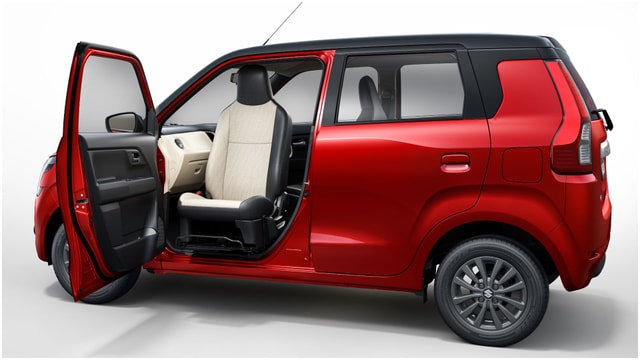 Amaan Ahmed | Dec 18, 2025Maruti WagonR Swivel Front Seat Kit Launched: Check Price, AvailabilityBangalore-based startup TrueAssist Technology Private Limited has developed a mechanism that allows the front passenger seat to swivel outwards, in a bid to improve accessibility for the aged and persons with disabilities.2 mins read
Amaan Ahmed | Dec 18, 2025Maruti WagonR Swivel Front Seat Kit Launched: Check Price, AvailabilityBangalore-based startup TrueAssist Technology Private Limited has developed a mechanism that allows the front passenger seat to swivel outwards, in a bid to improve accessibility for the aged and persons with disabilities.2 mins read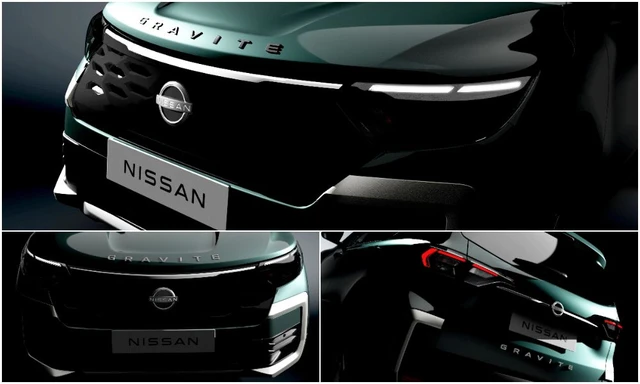 Amaan Ahmed | Dec 18, 2025Nissan Gravite MPV (Renault Triber Derivative) To Be Launched Early In 2026Nearly seven years on from the launch of the MPV it shares its underpinnings with arrives Nissan's entry-level 7-seat model; to debut in January.2 mins read
Amaan Ahmed | Dec 18, 2025Nissan Gravite MPV (Renault Triber Derivative) To Be Launched Early In 2026Nearly seven years on from the launch of the MPV it shares its underpinnings with arrives Nissan's entry-level 7-seat model; to debut in January.2 mins read Jafar Rizvi | Dec 18, 2025Tata Sierra Pure, Pure+ Variants Explained In PicturesThe Pure trim of the Sierra is priced from Rs 12.49 lakh to Rs 17.49 lakh (ex-showroom), depending on the powertrain option. Here is a breakdown of what it gets.3 mins read
Jafar Rizvi | Dec 18, 2025Tata Sierra Pure, Pure+ Variants Explained In PicturesThe Pure trim of the Sierra is priced from Rs 12.49 lakh to Rs 17.49 lakh (ex-showroom), depending on the powertrain option. Here is a breakdown of what it gets.3 mins read
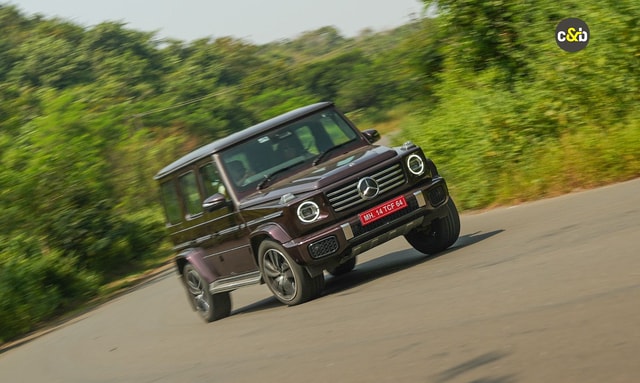 Bilal Firfiray | Dec 18, 2025Mercedes-Benz G450d: The Subtle Power of EvolutionThe Mercedes-Benz G 450d evolves subtly with more power, improved efficiency, and modern tech, while staying true to the timeless G-Class design. And character.4 mins read
Bilal Firfiray | Dec 18, 2025Mercedes-Benz G450d: The Subtle Power of EvolutionThe Mercedes-Benz G 450d evolves subtly with more power, improved efficiency, and modern tech, while staying true to the timeless G-Class design. And character.4 mins read Janak Sorap | Dec 11, 2025Harley-Davidson X440 T First Ride Review: Smarter and SharperHarley-Davidson has taken the X440 and given it a more focused and engaging twist. The result is the X440 T—essentially the same platform but updated in areas that give the motorcycle more appeal and riders more thrill.5 mins read
Janak Sorap | Dec 11, 2025Harley-Davidson X440 T First Ride Review: Smarter and SharperHarley-Davidson has taken the X440 and given it a more focused and engaging twist. The result is the X440 T—essentially the same platform but updated in areas that give the motorcycle more appeal and riders more thrill.5 mins read Shams Raza Naqvi | Dec 10, 20252025 Mini Cooper Convertible Review: More Colour On Indian RoadsThe updated Mini Cooper Convertible is set to be launched in the Indian market in the next few days. We drive it around Jaisalmer for a quick review.1 min read
Shams Raza Naqvi | Dec 10, 20252025 Mini Cooper Convertible Review: More Colour On Indian RoadsThe updated Mini Cooper Convertible is set to be launched in the Indian market in the next few days. We drive it around Jaisalmer for a quick review.1 min read Bilal Firfiray | Dec 8, 2025Tata Sierra Review: India’s New Favourite?Marking its return after a few decades, the reborn Sierra has made everyone sit up and take notice. But is it worth the hype?10 mins read
Bilal Firfiray | Dec 8, 2025Tata Sierra Review: India’s New Favourite?Marking its return after a few decades, the reborn Sierra has made everyone sit up and take notice. But is it worth the hype?10 mins read Girish Karkera | Dec 4, 20252026 Honda Prelude First Drive: Domesticated Civic Type RA sporty-looking coupe built to give customers a taste of performance but not at the expense of everyday practicality.5 mins read
Girish Karkera | Dec 4, 20252026 Honda Prelude First Drive: Domesticated Civic Type RA sporty-looking coupe built to give customers a taste of performance but not at the expense of everyday practicality.5 mins read
































































































































